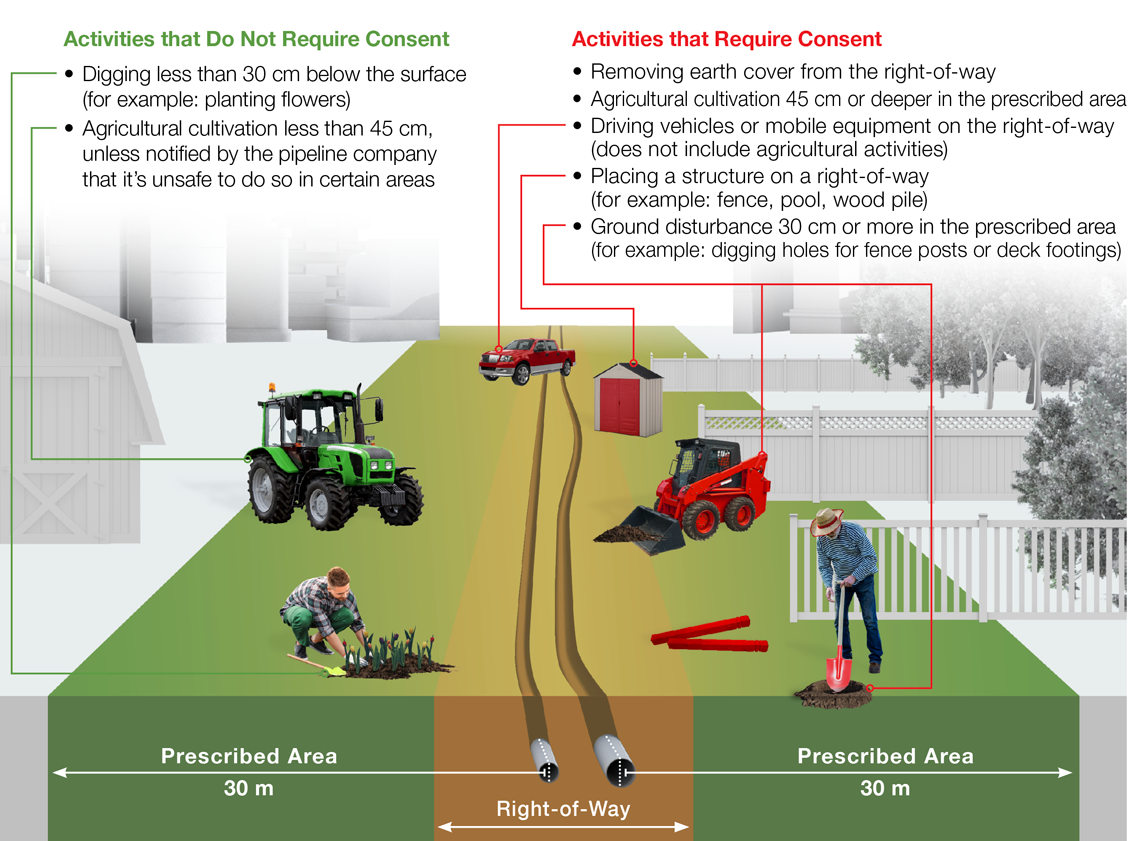ARCHIVED – LMG News – August 2021
This page has been archived on the Web
Information identified as archived is provided for reference, research or recordkeeping purposes. It is not subject to the Government of Canada Web Standards and has not been altered or updated since it was archived. Please contact us to request a format other than those available.

LMG News – August 2021 [PDF 4417 KB]
The LMG in Brief
The Land Matters Group (LMG) examines and resolves land issues related to energy infrastructure through a collaborative process.
The LMG is a forum for members to exchange information on the protection of the rights and interests of landowners, with the ultimate goal of achieving regulatory excellence.
The LMG advisory committee is made up of members from across the country who represent the membership. Members of the advisory committee provide advice and make comments and recommendations to resolve land issues.
Members are landowners, landowner associations, advocacy groups, as well as energy sector associations and companies, land professionals and government officials.
Welcome to the LMG News, the e-newsletter for all registered members of the Land Matters Group (LMG)
Table of Content for this August 2021 issue:
- LMG in Brief
- Update from the Land Matters Group Advisory Committee
- Right-of-Entry – What You Need to Know
- Land Related Compensation Disputes
- How to deal with damages to lands or property?
- The Safety Behind the Prescribed Area

Figure 1 – Red barn at the end of fields lined with wood fences
Update from the Land Matters Group Advisory Committee
As the new Director of Engagement responsible for the Land Matters Group, I am taking this opportunity to provide you with an update on the work being accomplished by the Land Matters Group Advisory Committee and CER staff. More specifically, I am referring to the progress being achieved as an outcome to the 3-day workshops attended by the Advisory Committee members and staff last February. As mentioned in the April newsletter, a roadmap was created to track our progress addressing the 50+ recommendations listed in the summary notes.
A preliminary review of the recommendations was conducted, some of which have already been implemented while others will take some time. As part of the first grouping of recommendations, CER staff are looking at ways to further improve the depth of information revolving around the following matters: lifecycle engagement, company access to property, right of entry and alternative dispute resolution.
From this point forward, upcoming meeting agendas will include as a standing item, a progress update to be shared with committee members. This information will also be featured as an update in the following issue of this newsletter. Stay tuned!
The next committee meeting will take place in September and the following newsletter will be published in November.
Véronique Duhamel

Figure 2 – Man photographed from the back looking at fields in the distance
Right-of-Entry – What You Need to Know
How does a company obtain the right to enter private lands?
When a company needs to access privately owned lands for its CER-regulated project (a pipeline or powerline), it must first negotiate the terms of an agreement with the landowner to acquire the right to use the land to construct, operate and maintain the project. This agreement defines the company’s right-of-entry (ROE) to the lands. It is a legal agreement registered on the title for the lands and remains in effect even if the property is sold or developed.
What happens when there is no land agreement?
If a company is unable to reach an agreement with a landowner to access lands required for an authorized project, it can apply to the Commission of the CER for a ROE Order. The Commission has the authority to issue a ROE Order, if one is appropriate, granting a company the right to immediately enter lands as soon as the Order is registered, recorded, or filed at a local land titles or registry office.
A Right-of-entry Order on my property – what now?
Before a company submits its application for a ROE Order to the CER, it must first provide you with a written notice. From the date that you receive this notice, the company then has 30 to 60 days to apply for a ROE Order requesting authorization to enter your lands. During this time, the company will continue to negotiate an agreement with you.
Once an application for a ROE has been filed, there are provisions included in the process that allow you the opportunity to file an objection. If you object, you must file your written objection with the CER within 10 days after receiving a copy of the company’s application, and a copy of your written objection must also be served on the company. The company then has up to seven days to respond and serve you with a copy of their reply.
Before making a decision, the Commission will assess whether the company complied with the requirements as set out in the CER Act, the Rules of Practice and Procedure, and the CER’s Filing Manual. The Commission will also review the information provided in the company’s application, as well as the landowner’s written objection and the company’s reply. Once the review is completed, the Commission can then decide whether to grant the ROE Order, and if so, under what terms and conditions.
The ROE notice and compensation
The ROE notice will include information on the amount of compensation that the company will pay to the landowner, should the Commission issue a ROE Order. It is important to keep in mind that compensation disputes are dealt with through a separate application process.
For more details on how compensation disputes are handled, go to Land Use Compensation.

Figure 3 – Gate blocking access to dirt road
Important facts
- A ROE Order doesn’t give a company ownership of the land but gives a company the right to access the land.
- Even if you didn’t oppose the detailed route on your lands, you can still submit a written objection to a ROE application.
- As a landowner, you are free to continue negotiating and consulting with the company outside of the ROE process. In fact, the CER encourages this dialogue. If your concerns are resolved this way, you can withdraw your opposition to the ROE application at any time or have the company do so on your behalf. This is also true if a land agreement is reached after the Commission has issued a decision to grant the ROE Order.
What are the CER expectations of companies?
The Commission has filing requirements that specify how companies are to consult with the affected landowners. Companies are also expected to maintain their relationships with landowners or Indigenous peoples throughout the lifecycle of a project, such as the expectations regarding this relationship and, if needed, the terms of a land agreement that gives the company access to enter the lands.
For more details, see the early engagement section of the Land Matters Guide.
How can the CER help?
The CER’s Alternative Dispute Resolution (ADR) program offers voluntary and confidential facilitation and mediation services. Consider ADR if you are having difficulties or are uncomfortable negotiating a land agreement.
This process is facilitated by trained CER mediators, or by another neutral third-party mediator. ADR is completely voluntary, and all parties involved must agree to take part. ADR or direct negotiations can continue while the Commission assesses an application for a ROE Order.
Need more information?
You can find our Frequently Asked Questions about Right of Entry orders at this link.
For more information, please see the Land Matters Guide, or get in touch with us by phone at 1 (800) 899-1265 or by email at LMAS.SCQF@cer-rec.gc.ca. The Land Matters Advisory Service, can respond to questions about land matters with respect to CER-regulated energy facilities and processes. Want more information? Our Land Matters Advisory Service page can be found here.
No matter what CER regulatory process you may be involved in, CER Process Advisors and the CER Land Matters Advisory Service are available to help!
Land Related Compensation Disputes
When the Canada Energy Regulator (CER) was known as the National Energy Board (NEB), we did not have the authority to address compensation matters. If, for example, a landowner and a pipeline company could not agree on compensation, either party could apply to the Minister of Natural Resources Canada (NRCan) to receive the services of a negotiator, or to have the dispute settled by arbitration. Within NRCan, these arbitration and negotiation services were managed by the Pipeline Arbitration Secretariat.
When the NEB became the CER, and the new Canadian Energy Regulator Act (CER Act) came into force, the responsibility for compensation matters was transferred to the CER. The CER Act specifies what issues the Commission of the CER can consider regarding compensation disputes.
The CER has created two documents to help people learn and understand compensation under the CER Act. The Land Use Compensation document includes a “question and answer” format that provides an overall understanding about how the public can bring land related compensation disputes to the CER, and the options available to help them through the process. For more in-depth information on the CER and compensation disputes, the CER has created the Guidance on Land Related Compensation Disputes document.
Still have questions? Contact the CER’s Land Matters Advisory Service at LMAS.SCQF@cer-rec.gc.ca.

Figure 4 – Man with a wheat sheaf in his hand is talking to a woman holding a clipboard
How to Deal With Damages to Lands or Property?
During the lifecycle of pipelines and related facilities, a wide range of activities need to happen- from construction and remediation to integrity digs, as well as general operations and maintenance work. Although most of this work happens without issue, sometimes, damage can happen to land or property. This article provides a quick look at what defines damages, and it walks you through what to do if you think damages have happened to property you own or use.
What are damages?
Under the Canada Energy Regulator Act (section 321 – Acquisition or Lease of Land), among other things, land agreements must contain information about damages, including details of compensation to address any damages caused by a pipeline company’s activities or by a third party working on behalf of a pipeline company.
Companies are responsible for any damages caused by its activities. This can include damages caused by the activities of the company related to the acquisition or lease of lands for a pipeline or abandoned pipeline; the construction of the pipeline; or the inspection, maintenance or repair of the pipeline or abandoned pipeline.
For example, this could look like a damaged fence, crop or field damage or damage to access roads, driveways, water well and other inconveniences.
This looks like damage caused by a contractor when visiting my property; what now?
Your first step is to document the damages, and refer to your land agreement, which will have details on dealing with damages and any compensation. Next, contact the company representative to advise them of your concerns. Be prepared with the details of the damages, and as much documentation as you are able to assemble, including photos if possible.
How do I document damages?
- Identify the company or contractor that caused the damage.
- Explain the damage done in writing, through photos, or both.
- Describe the location of the damage.
- Describe the duration and effect of the damage.
- Describe your expectations in terms of remediation (for example, the fence would be repaired, or reseeding would be done with a certain type of seed mix).
- Provide any supporting information, such as a quote from a local repair company.
- Send your documented information to the company, including your contact details and preferred method of contact, and keep a copy for your records.

Figure 5 – Man looking at a flooded section of a cultivated field
What information do I need to have in hand when I to talk to the company?
You will need the details of the damages, including details of the impact to you, your property or land. The more details, the better.
You will also want to think about any specific requests around resolving the damages (repair of a specific area, replanting of a tree, etc.). If you are looking to discuss compensation amounts, you will want to have a justification of the amount of compensation you believe is appropriate given the damages you’re discussing. You may also want to have a copy of your land agreement (if applicable), as it will have more about what both you and the company have agreed to around compensation for damages.
When do I talk to the company? When do I talk to the CER?
We recommend talking directly with the company to try and resolve any concerns about potential damages. If you’re not able to resolve your concerns regarding damages, or just have questions, don’t hesitate to reach out to us; we’re here to provide support.
How can the CER help? Questions?
For more information, please see the Land Matters Guide, or get in touch with us by phone at 1-800-899-1265, or any of the ways below:
The Land Matters Advisory Service (LMAS): If you have questions about land matters with respect to CER-regulated energy facilities and processes, email LMAS.SCQF@cer-rec.gc.ca. Want more information? Our Land Matters Advisory Service page can be found here.
Alternative dispute resolution: Any time during the life of a project, if you are unable to resolve concerns directly with the company, you can email ADR-RED@cer-rec.gc.ca to ask a specialist to work with you and the company to find solutions. You can find more information at this link.
Complaint Resolution: If you are unable to resolve an issue with a CER-regulated company, facility, or activity on lands you use or own, you can send us a completed Complaint Form – more information can be found at this link.

Figure 6 – Tire tracks across a wet field
The Safety Behind the Prescribed Area
The prescribed area (a.k.a. the safety zone) is the 30 m expanse of land measured on both sides of a pipeline from the centreline of the pipe and it also includes the right-of-way (ROW). It is an area where extra precaution, communication, and consent from the pipeline company is required for some activities.
When the Pipeline Safety Act became law in 2016, it gave the CER (National Energy Board at the time) the authority to “prescribe an area” in which consent from pipeline companies was required for certain activities; hence the “prescribed area”. What a lot of people don’t realize is that between 1988 and 2016, the same requirements existed in what was called the “Safety Zone”. The Safety Zone was larger than the prescribed area, and the requirements were a little more restrictive.
The reason that we have a prescribed area, or safety zone, stems from an incident in 1985 when a contractor installing drain tile at a farm in Ontario hit a federally regulated natural gas pipeline. There was a fatality and several serious injuries resulted from that pipeline damage. The National Energy Board Pipeline Crossing Regulations Parts I & II came from recommendations stemming from the investigation of that incident and came into force in 1988.
When we updated the regulations to the (then NEB, now CER) Pipeline Damage Prevention Regulations – Authorizations (DPR–A) and Pipeline Damage Prevention Regulations – Obligations of Pipeline Companies (DPR-O), we did a few things – we changed the name of the regulations to more accurately reflect the intent of the regulations; we provided a definition for a “ground disturbance” in the CER Act and we shrunk the prescribed area so that it is measured from the centreline of the pipe rather than the edge of the ROW. Before 2016, the safety zone was measured 30 m from the outside edges, so the area was larger and varied in width, depending on the size of the ROW. We harmonized the prescribed area with the provincial requirements to simplify things for contractors and landowners.
The goal of the regulation is to ensure communication between people living and working near pipelines and the pipeline company so that activities can be done safely. Inadequate communication between ground disturbers and infrastructure owners is a leading cause of damage to underground pipes and cables.
When a pipeline company receives a request for consent for an activity in the prescribed area, they are required to inform the person who made the application whether the consent has been granted or refused within 10 working days. In the case of a refusal, the pipeline company must provide the reasons for the refusal; and the reasons must be based on safety factors.
Before you start your approved project, the pipeline company is obligated to locate and mark the pipe and give you the information you need to do your project safely.
Here are a few examples of activities:

Graphic description
Activities that Do Not Require Consent
- Digging less than 30 cm below the surface (for example: planting flowers)
- Agricultural cultivation less than 45 cm, unless notified by the pipeline company that it’s unsafe to do so in certain areas
Activities that Require Consent
- Removing earth cover from the right-of-way
- Agricultural cultivation 45 cm or deeper in the prescribed area
- Driving vehicles or mobile equipment on the right-of-way
(does not include agricultural activities) - Placing a structure on a right-of-way
(for example: fence, pool, wood pile) - Ground disturbance 30 cm or more in the prescribed area
(for example: digging holes for fence posts or deck footings)
For more information of damage prevention and the prescribed area, please visit the updated Damage Prevention pages on the CER website. There are links to our publications and other damage prevention resources.
For up to date information about land matters or to join the LMG
- Date modified:
